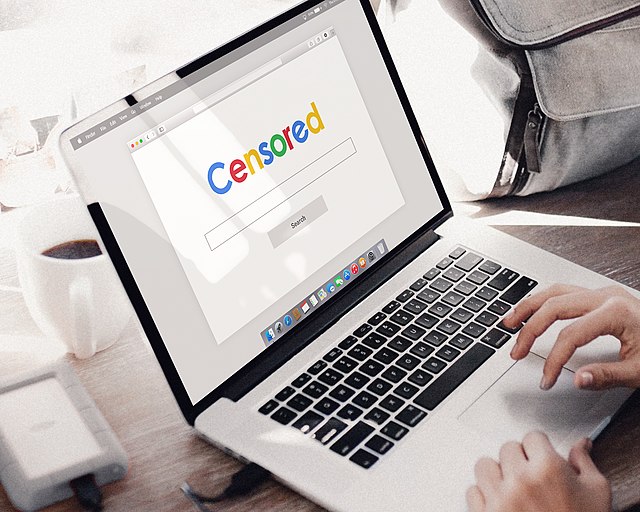Excerpt: An analysis of gender-based censorship as perpetrated by governments and corporations following Kuwait’s ban of the feminism promoting 2023 Barbie movie.
The relationship between gender and censorship mirrors an ongoing power struggle between media and government. This intersection of industries has roots stretching back to the beginning of media being used as a mass consumption tool. More recently, the rise of feminism in the 19th century brought about a new understanding of media as an industry in which women sought and fought to be included; but not without controversy. The related points of contention not only include critiques against women pursuing careers in media, but also the establishment of ‘rules’ for content that women are allowed to share. These rules manifest in concrete and established terms, conditions, and codes of conduct, as well as implicit biases from society. This form of gender-based censorship is a crippling threat to the already colossal gender imbalances globally, and is an ongoing grievance against the inclusion of modern women. Gender is a tool weaponized to advantage the patriarchy, and the censorship of gender-based content is the means by which further injustices materialize.
The connection gender has to censorship stretches far and wide and has had long lasting implications on a country’s quality of life, especially for those that already face oppression, such as women and LGBTQ+ identifying individuals. The framework for understanding the complex connection between the two concepts starts by defining them. Censorship is considered the purposeful suppression of media, speech, and information. It is typically perpetrated by governments, companies, and other authority wielding institutions. The link between censorship and gender manifests in several different ways, from the banning of feminist and progressive content, to the endangerment of female journalists, writers, creatives and academics.
Kuwait’s recent ban of the Barbie movie reopened the debate on the validity of nations placing restrictions on ‘controversial’ media. The rationale behind the ban was that the film “promulgate[s] ideas and beliefs that are alien to Kuwaiti society and public order,” according to a spokesperson for the Kuwaiti Ministry of Information. The beliefs that the Kuwaiti leadership are objecting to include those which denounce misogyny, the patriarchy, and traditional gender roles. The danger with this censorship lies not only in the regressive views of the Kuwait government regarding gender roles and expressions of sexuality, but also in the ability of the government to impose a ban on media without the consent of their citizens. Banning films and other forms of gender progressive media is a considerable hindrance to the freedoms of women and marginalized communities who rely on these portrayals for self-expression and representation.
Lebanon is another nation whose leadership is seeking to ban the movie. Lebanese culture minister, Mohammad Mortada, claims that the film “promotes homosexuality and transsexuality” and undermines the traditional family structure of men wielding the majority of familial and relationship power over the more submissive woman. This kind of censorship stifles diversity of and exposure to thoughts and beliefs within society, ensuring instead that all media conforms to a singular homogenous belief system.
Moreover, the forcible removal of content deemed erroneous by a singular government creates a slippery slope towards totalitarianism and further repression of citizens’ rights to consume content. Extreme censorship should be reserved for hate speech, criminality and objectively morally incorrect actions, of which the Barbie movie constitutes none. Unfortunately, this film is not the first to be banned due to its promotion of gender-based treatment reform; the Marvel movie Eternals was also banned in Saudi Arabia, Qatar, and Kuwait due to its featuring of the Marvel Universe’s first openly gay superhero, Phastos.
The discourse of gender based censorship becomes even murkier when considering its presence in the digital and social media spheres. The rise of social media as a content sharing tool has led to the exacerbation of differences between the online treatment of men and women. Women suffer from digital sexualization and content restrictions in much more severe ways than men. The nipple is a prime example of this. The female nipple is considered to be nudity online, while the male one is generally validated and accepted. On one hand, this represents a systemic failure of technological companies to promote equality across platforms, imposing restrictions and censorship solely on women’s nipples. On the other, it reveals what is a larger societal problem of the over-policing of female bodies. These companies model themselves and their policies after society’s values which, as it stands, continue to view the female nipple as illicit. Without societal change, both government and industry regulation shifts will be near impossible to accomplish. Both of these entities—government initiated censorship, and censorship enforced through technology companies—frame our 21st century perspective on acceptable content and regulatory bias in written, visual and auditory works.
Gender-based censorship can also be much less explicitly perpetrated. The Women’s World Organization for Rights, Literature and Development defines gender-based censorship as being “embedded in a range of social mechanisms that mute women’s voices, deny validity to their experience, and exclude them from the political discourse.” These social mechanisms manifest in a preference for content produced by and representative of men, and a subsequent silencing of female voices. This framework understands that not all gender-based censorship is as visible as the banning of the Barbie movie, the Eternals film, and the female nipple. While all gender-based censorship has detrimental implications for collective freedom and individual safety, the marginalisation of women’s voices in journalism can be just as harmful despite being covert. The various understandings of the interactions between gender and censorship can and do exist simultaneously. It is these intersections that point to the complexity of the issue in theory, practice, and discussions towards a solution.
Solving the problem of gender discrimination through the lens of censorship is not clear-cut, nor does it promise to be a timely process. But, with increased understanding of the problem comes the mobilisation of resistance. In the words of early feminist author Virginia Woolf: “lock up your libraries if you like; but there is no gate, no lock, no bolt that you can set upon the freedom of my mind.” Banning media cannot suppress thought and opinion, and those two creeds might just be the key to fixing the world’s relationship with gender-based censorship.
Edited by Madeline Chisholm

Sophie Hill joined the Catalyst team in September 2023 and is her first year at McGill University studying International Development Communications. Her research interests include media, culture, technology, international conflict and global justice. Sophie aims to approach her writing from an ethical perspective and seeks to provide analysis using a variety of diverse sources to educate and inspire Catalyst readers.

